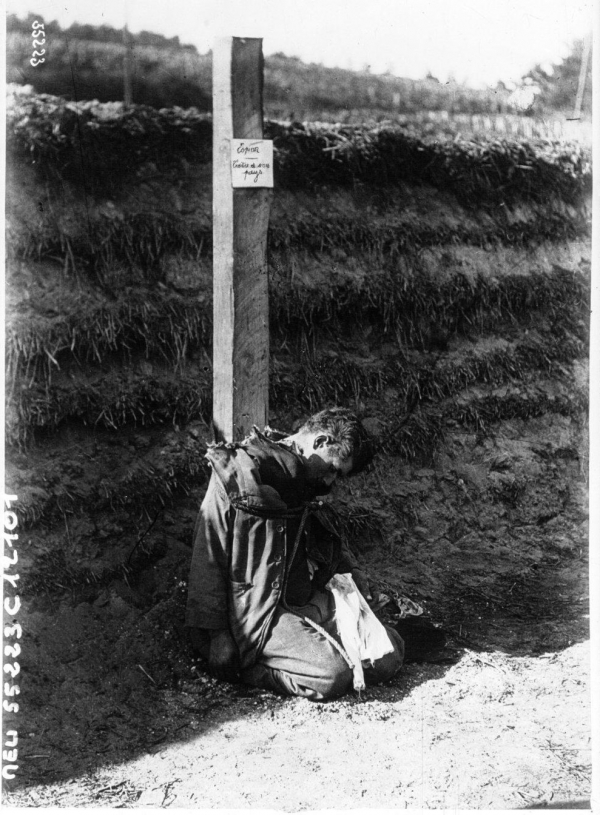Ces exécution s’inscrivent dans un contexte très particulier, celui des lendemains de la bataille des frontières (10-24 août 1914) où les troupes françaises sont mises en déroute et doivent retraiter dans des conditions particulièrement éprouvantes. Soldats ayant perdu contact avec leurs unités ou contestant les conditions d’engagement des troupes françaises, civils incapables de justifier leur présence : on sait encore aujourd’hui très peu de chose sur ces hommes, l’historiographie ayant davantage portée ses regards sur les mutineries de 1917.
After the Battle of the Frontiers (10-28 August 1914), which ended in French defeat, French troops were forced to flee in particularly harsh conditions. Those killed were both civilians and soldiers: soldiers who had become separated from their units or contested orders, but also civilians unable to explain what they were doing there. We still know very little about those killed as historians tend to focus instead on the mutinies of 1917.
Today we received an email with permission to use two photos in the book we have written which are owned by the Bibliotheque Nationale de France. This is one of the images. The other is of a French soldier being executed at Verdun.
This image is shocking to look at, but at the same time fascinating. It vividly shows what we have been researching - the execution of soldiers by their own forces during the First World War. New Zealand gave death sentences to 28 soldiers but executed only 5 soldiers for misbehaviour; desertion and mutiny. France gave death sentences to 2,500 soldiers and executed 630 men.
L’historien Anthony Babington a dit :
« Il semble que la question de la vie ou de la mort ait été déterminée par deux facteurs : le fait que l’homme condamné soit considéré comme un bon soldat et le fait que son exécution puisse profiter ou non aux besoins disciplinaires immédiats. »
Anthony Babington, For The Sake of Example: capital courts-martial 1914-1920, 1983
British Historian Anthony Babington commented that;
“The issue of life or death seems to have been determined by two factors – whether it was considered that the condemned man had the makings of a good soldier; and whether his execution might be beneficial for the immediate needs of discipline”.
Anthony Babington, For The Sake of Example: capital courts-martial 1914-1920, 1983
Latest from Soldiersandorder NZ-FR
- Shared Histories exhibition posters in Wellington
- Prime Minister John Key with Baradene College Students and Shared Histories exhibition.
- Shared Histories exhibition Opening in Wellington. Baradene College students Olivia Mendonca and Genevieve Bowler with the Governor-General of New Zealand, Sir Jerry Mateparae.
- Our project makes it to Elizabeth II Pukeahu Education Centre [Wellington] launch - wow
- Project becomes an e-book at Auckland Libraries!
